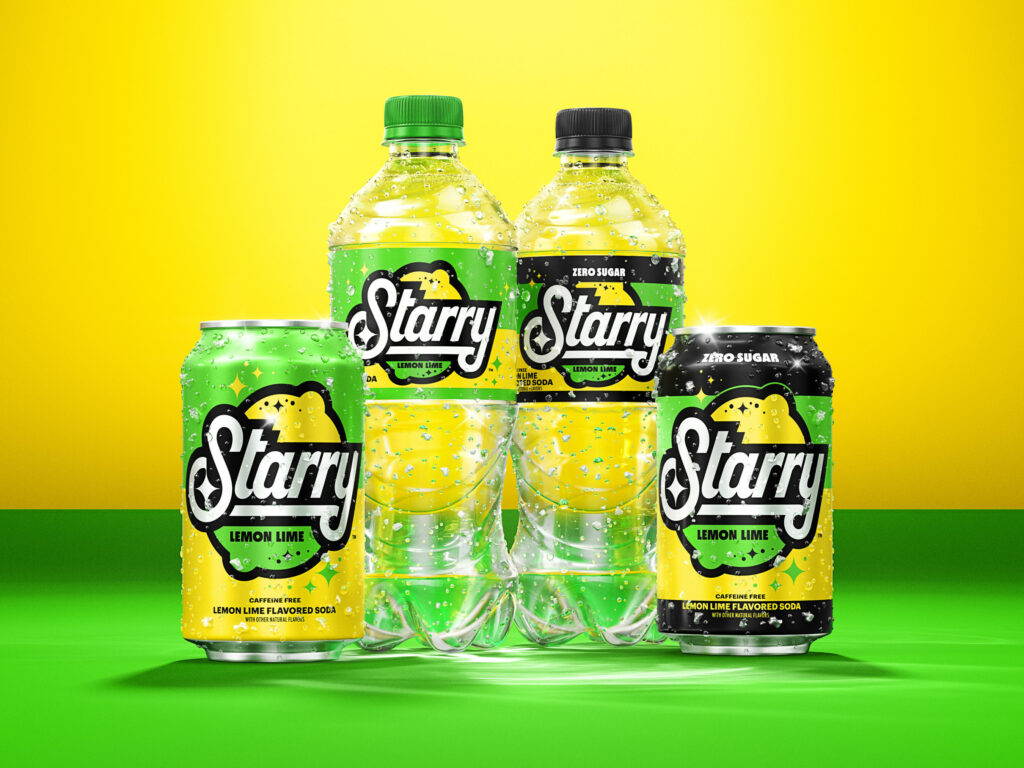Starry soda, Pepsi’s innovative entry in the lemon-lime soda market, has nearly completed its first year on the market. Introduced in January 2023, this strategic move was aimed at competing with Sprite, Coca-Cola’s dominant lemon-lime beverage, which boasts a seven percent share in the $82 billion US soda market. Sierra Mist, Pepsi’s previous contender, only managed to secure about 0.1 percent of this market share.
Throughout its debut, Starry soda has been a bold statement from Pepsi, showcasing the beverage company’s renewed vigor in its beverage lineup. Bloomberg Intelligence analyst Kenneth Shea regarded Starry’s introduction as “the most aggressive move made by the company’s reinvigorated beverage business in years.”
This isn’t the first time Pepsi has attempted to revitalize its position in this segment. Sierra Mist was previously replaced in 2016 with Mist Twist, as reported by the Eat This, Not That food news website. But in a twist of events, Mist Twist was discontinued two years later, bringing Sierra Mist back on the market.
Related: Sugar Free Cranberry Juice: NewTree Fruit Company’s De-Sugaring Technology
Now, with Starry soda, Pepsi aims to capture a more significant market segment, leveraging its unique flavor profile and strategic marketing to challenge Sprite’s long-standing dominance. As Starry soda celebrates its first year in January 2024, it marks a new chapter in the ongoing soda wars, with Pepsi hoping to turn the tides in its favor.
With the launch of Starry soda, Pepsi is specifically targeting younger consumers, notably Gen-Z. The brand’s adoption of contemporary internet slang in its slogan, “Starry Hits Different,” reflects an understanding of the shift in younger demographics away from sugary drinks and towards smaller, more trend-aware brands like Poppi and Olipop.
Many beverage giants are conscious of this shift and are striving to expand their market share by appealing to a demographic they’ve previously underserved. Starry’s design, characterized by its bright, fun, whimsical and Instagram-friendly aesthetic, is more in line with Gen-Z tastes compared to Pepsi’s other products.
Pepsi has promoted Starry soda through a combination of TV and digital advertising, ensuring a strong presence on social media platforms like TikTok, which are popular among younger audiences. To capture the attention of sports fans, Starry also became the official soft drink of the NBA, the WNBA and NBA G League in North America.
Despite the challenge Pepsi faces in competing with a rival that has been a market leader for over 60 years, if marketed correctly, there is potential for Starry’s future. While Starry is entering a market segment dominated by Coca-Cola, and adding to an already crowded carbonated soft drink category, this could work in its favor. Younger consumers are increasingly willing to deviate from established brands and are eager to try new flavors and formulations, offering an opportunity for Starry to make its mark.
Thus far, public reaction to Starry has been mixed, as evidenced by comments from soda enthusiasts on Twitter. While some have not taken to the new drink — with one user dramatically pouring it into a trash can — others have expressed positive surprises, with a fan stating, “Starry is better than I expected. Actually better than Sprite.” This range of reactions underscores the diverse consumer responses to new products in the competitive soda market.
Starry soda is available in both its regular and zero-sugar variants. Described as a “great-tasting soda bursting with lemon-lime flavor” offering a “crisp, refreshing bite,” the company’s press release highlighted Starry’s appeal to consumers.












Join or login to leave a comment
JOIN LOGIN